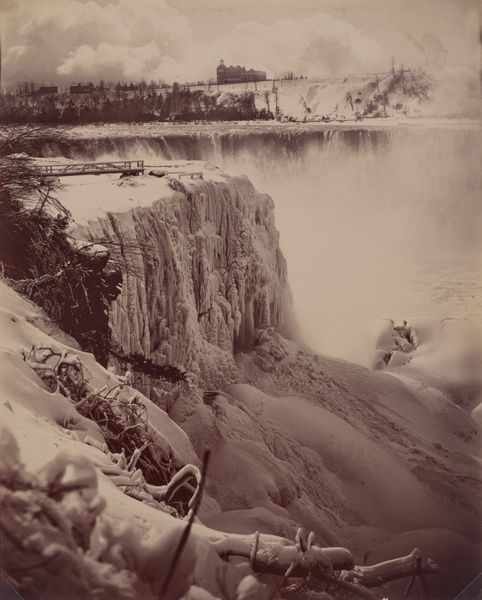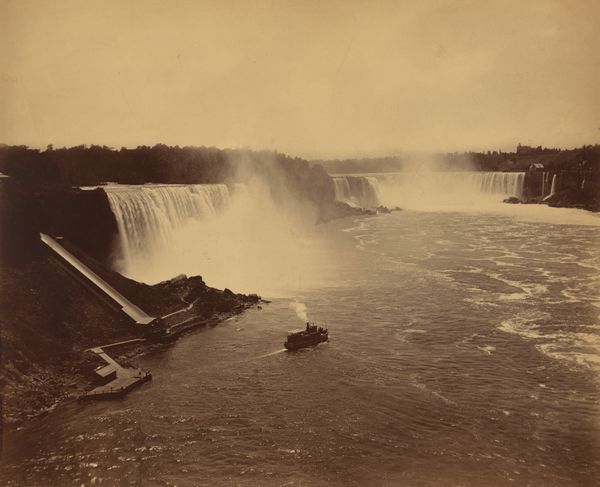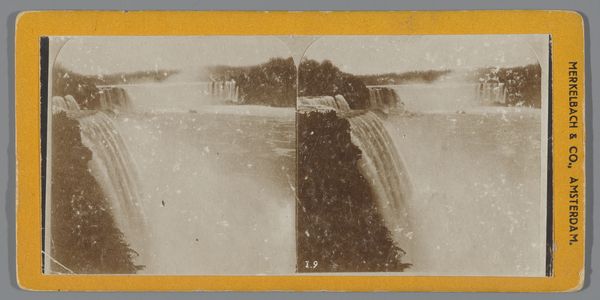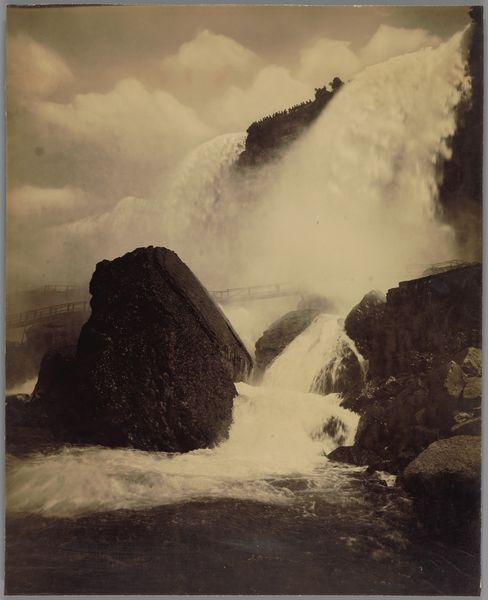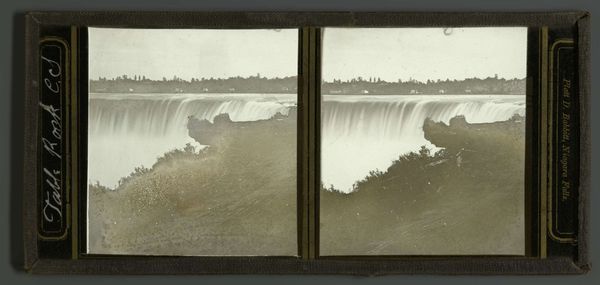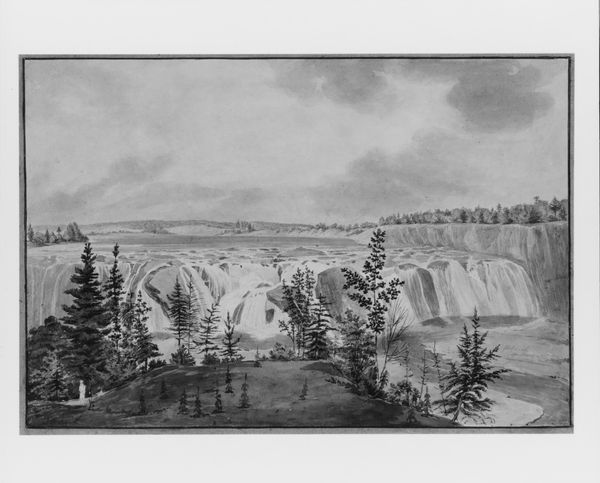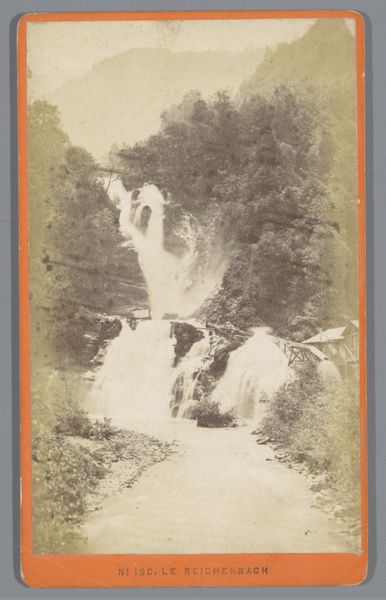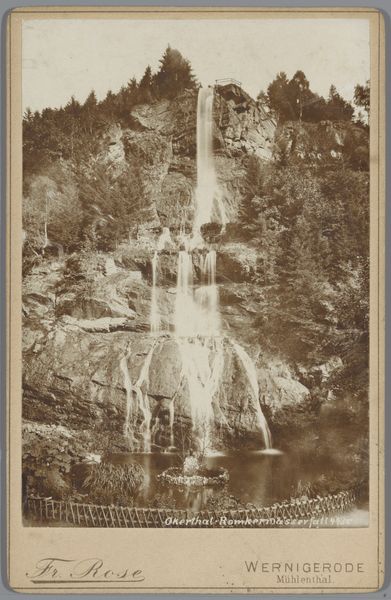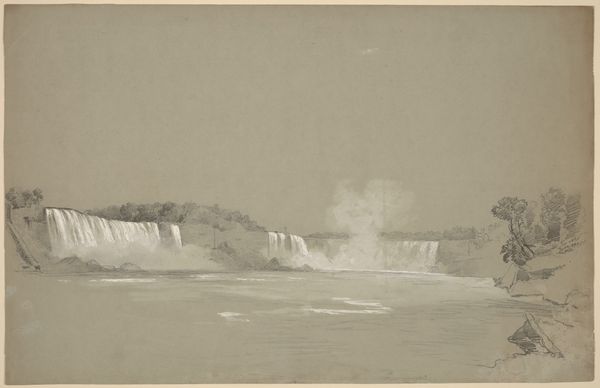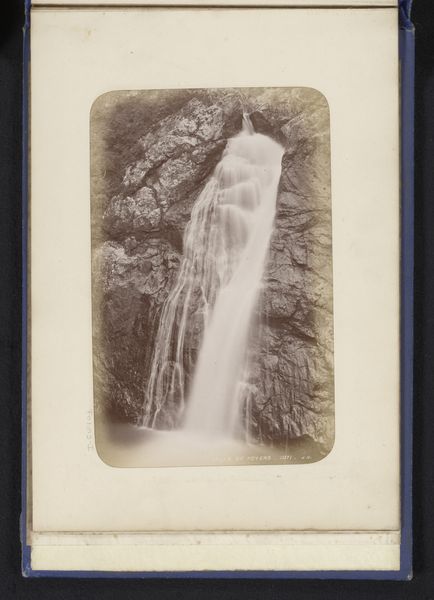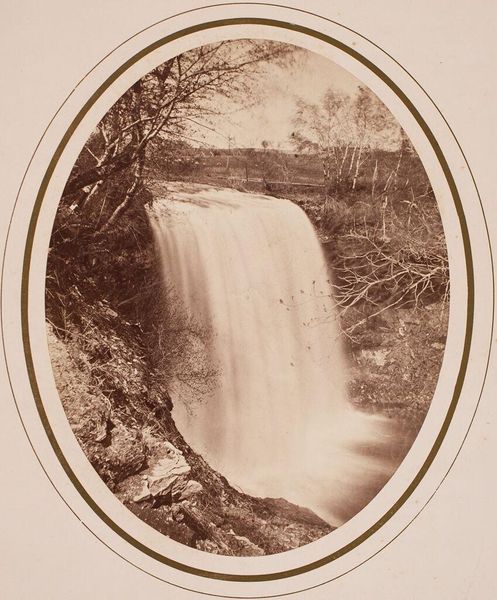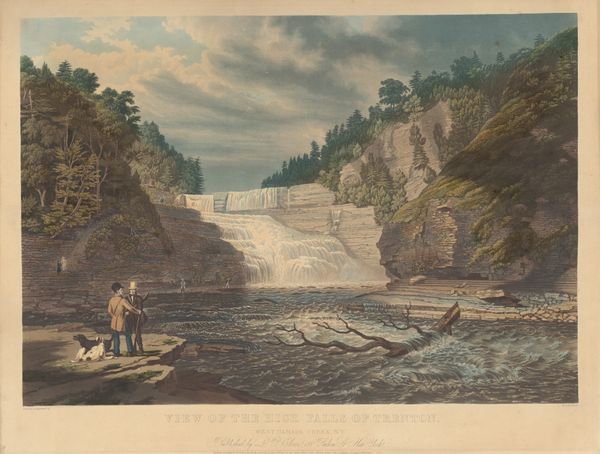
Dimensions: image (visible): 14 × 18.3 cm (5 1/2 × 7 3/16 in.) mat: 21.7 × 27.5 cm (8 9/16 × 10 13/16 in.) framed: 31.3 × 37.7 × 3.5 cm (12 5/16 × 14 13/16 × 1 3/8 in.)
Copyright: National Gallery of Art: CC0 1.0
Curator: Welcome! Before us is Platt D. Babbitt's circa 1855 daguerreotype, "Niagara Falls." Editor: Immediately, I’m struck by the subtle tonality, almost sepia-like, contrasting the monumentality of nature against the composed group portrait. It evokes feelings of awe and temporal fragility. Curator: Indeed. Notice how Babbitt meticulously balances the tonal relationships, guiding our eye between the dark masses of the shoreline and the ethereal falls. The circular format enhances the contained yet infinite sense of space. Editor: It's a sublime landscape viewed through the lens of human presence. The falls were already a potent symbol, and here they’re reinforced, acting almost as a stage for observing societal values. Curator: Agreed. The presence of those figures serves as a kind of scale. But look at the contrast: the blurred motion of water versus the subjects attempting to pose, revealing the inherent tensions between fixity and flux. The photograph's strength emerges through its textural and tonal layering. Editor: The human figures are a cultural symbol in themselves. Note their clothing and grouping as emblems of that specific time. Perhaps it speaks to our impulse to seek out what inspires and overwhelms. Niagara held that romantic appeal even then. Curator: Quite. The perspective flattens the composition. Babbitt presents nature filtered, shaped for an emergent industrial-age viewer; what do you think that might suggest? Editor: Perhaps this early photograph of Niagara functions like an artifact of collective aspiration: controlling the sublime. Each member of the audience is made visible through the implicit symbols. What better place than nature’s greatest spectacles to feel its grand potential? Curator: Precisely! It reveals so much through the very controlled surface that may first strike us. Thank you. Editor: And to you, it’s been an enlightening analysis of history!
Comments
No comments
Be the first to comment and join the conversation on the ultimate creative platform.
